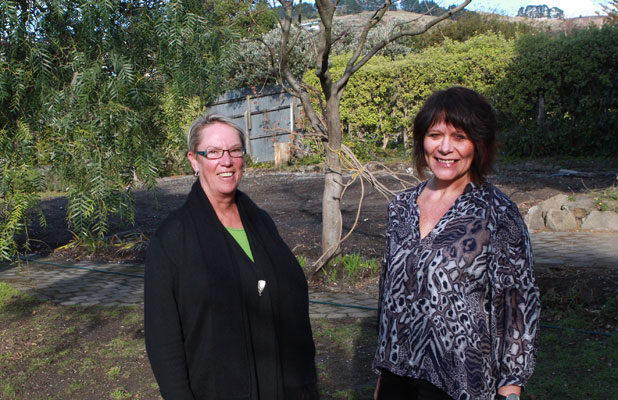Sandy Crane and Ruth Dyson watched as their homes were deconstructed. Their choice to deconstruct and recycle rather than demolish and dump was easy. Their decision was based on their fundamental belief about sustainability and the need to re-use our resources.
What does sustainability mean in Christchurch in these post-earthquake times? Is our society genuinely concerned with waste management? Are the decision makers in the our post-earthquake recovery regarding the environmental policies?
When looking at our recovery we ask these questions daily concerning the demolition of our old and broken. Working in the city one sees the choices that people are making about their demolition and rebuild daily.
There are policies in place to manage the byproducts of demolition. The rules and red tape around being a responsible contractor in this city are quite astounding. Each demolition company has its own unique waste management plan. Some choose to deconstruct and recycle and others, demolish and dump.
Underpinning the decisions on whether to recycle is our need for affordability. Is deconstruction and recycling cost effective? The cost of deconstructing with labour costs a little more. But its effectiveness lies in the ability to re-use the recovered material. Savings can be made on timber, kitchens, bathrooms, windows, insulation, paving, roofing materials, carpets, and the list goes on.

RESPONSIBLE ACTION: Ruth Dyson, left, and Sandy Crane, neighbours at 31/33 Moncks Spur Rd, look over what used to be Dyson’s home at No 31. They chose to deconstruct to meet their belief in sustainability.
Sandy and Ruth chose a deconstruction company that has a conscious waste management programme and opts for a “stand lightly on the land” approach. Choosing to employ six men instead of one digger for the day, and gently deconstructing the building, allows salvage of everything from insulation to internal wiring.
A high labour involvement means all the building materials can be sorted and de-nailed on site, taken to the recycling yard where they are sold or saved for use at a later date. The parts of the building that cannot be reused represent only about 10 per cent of the total and get sorted to another waste stream.
The benefits from this approach seem to go beyond the superficial to deep into our psyche. These buildings have held their owners, often for decades, and represent the heart of the family in some ways. Respectfully removing them feels right.
Using recycled products is like paying it forward. This approach enhances connectivity and sharing knowledge, upskilling our new compassionate, post-disaster society that values resource and each other.
Once the building has been gently deconstructed the site is left clean, clear and safe. Discussions with the owners may result in some landscaping remaining, perhaps steps and paths or some trees that can help create the ambience and purposefulness of the new site.
By choosing a company that deconstructs, the homeowner is contributing towards a sustainable society.
Deconstruction of homes requires sensitive empathetic communication. This allows the community to keep talking about recycling, sustainability and responsibility about the rebuild here in Christchurch.
Deconstruction happens a little in Christchurch. A few companies have recycling yards and have sound practice concerning their waste streams, resulting in less in the landfill. It would be great to see more recycling and the reuse of building materials.
Companies leading decision making in Christchurch all have environmental and resource management at the company policy level. They operate according to their environmental, corporate and social responsibility. Some operate under performance standards that are international.
Cera clearly states that the governmental responsibilities rely on contractor resource limitation and recovery time frames. This means that if the contractor has not got the resources to recycle it is not necessary. It gives licence to demo and dump.
Choosing to deconstruct and recycle is a conscious decision that indicates the decision maker has seen their environmental responsibility.
For the property owner, the process of losing the family home can be traumatic but the outcomes from deconstruction and recycling can provide possibilities. Ruth and Sandy, as with others, have a site left with their trees and are a little closer to their rebuild.
Janet Stott is a contracts manager for the engineering and construction company 1 Geo Ltd. Martin Ward is an independent sustainability adviser.
